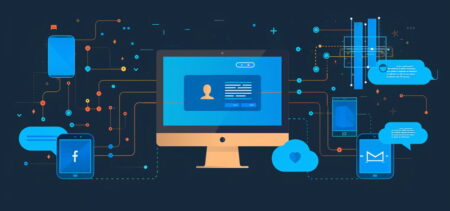Our previous article noted the importance of cutting through the hype and following real best practices that help Best-in-Class firms survive and thrive. Specifically, we recommended using a truly data-driven approach highlighting how CX leaders from companies of all sizes and industries succeed – instead of trying to replicate a success story that worked for only a handful firms.
The list of technologies that companies use to manage customer experiences is extensive. Throughout 2017, Aberdeen surveyed CX leaders in companies across the globe to determine the technologies and processes they currently use and plan to incorporate into their activities to achieve Best-in-Class results. This post will start highlighting several of them. Figure 1 shows the highest-ranking ones for planned adoption in 2018 and beyond.
Figure 1: A Close Look into Current & Planned CX Technology Adoption
Figure 1 provides a long list of technologies that are on CX leaders’ radar. Before we take a closer look at some of these technologies, it’s important to note that every firm has different priorities. These priorities are highly influenced by customer expectations. The technologies companies will adopt will vary based on these expectations, along with other factors such as organizational resources.
Self-service analytics: This is the technology with the highest planned adoption rate. It refers to using business intelligence to analyze self-service interactions through interactive voice response (IVR), self-service websites and chat bots. While self-service and analytics are not new technologies, companies recognize the growing customer demand to address (simple) issues such as account balance checks and password resets. In turn, the data shows that more firms are planning to implement self-service analytics to gauge their success in helping customers help themselves.
Prescriptive intelligence / recommendation engines: This technology represents the second highest planned adoption rate. It helps firms analyze historical and real-time data and prescribe / recommend next best actions the firm must take to achieve its goals. For example, if the goal is to grow cross-sell and up-sell revenue, this technology can analyze historical interactions involving cross-sell / up-sell and find the common characteristics across these interactions, then recommend next steps to maximize the potential for success. This technology utilizes some of the other technology capabilities listed in Figure 2, including machine learning, predictive analytics and artificial intelligence.
Machine learning and artificial intelligence (AI): These two technology capabilities are among the most popular technology terms of 2017, and they’re expected to stay that way in 2018. Unfortunately, many firms are unclear about the distinction between the two, and regularly refer to machine learning capabilities as AI. To this point, the former refers to a technology that automatically analyzes data and learns from it – without regular human intervention / programming. Examples of this capability is analyzing customer traffic volumes in a contact center and identifying evolving factors (e.g. inclement weather, surge in negative social media comments) influencing customer traffic volumes through machine learning, instead of relying on data scientists to do the same.
AI, on the other hand, goes beyond learning. It uses data to mimic human learning and decision-making capabilities. For example, in the above scenario, AI would use the insights gleaned through machine learning to automatically adjust agent schedules by observing factors impacting customer traffic levels. This in turn would help the contact center minimize overstaffing and understaffing, while ensuring that customer needs are met in a timely and effective fashion.
Figure 1 shows that both machine learning and AI are high on the priority list of CX leaders in 2018. See the March 2017 Cognitive Customer Experience: The Future is Here study to learn more about how these technologies influence customer experience results.
Stay tuned for our next post highlighting more technologies CX leaders plan to incorporate into their technology toolbox in 2018.
The post Customer Experience Trends 2018 – Part 1 appeared first on Aberdeen Essentials.


































